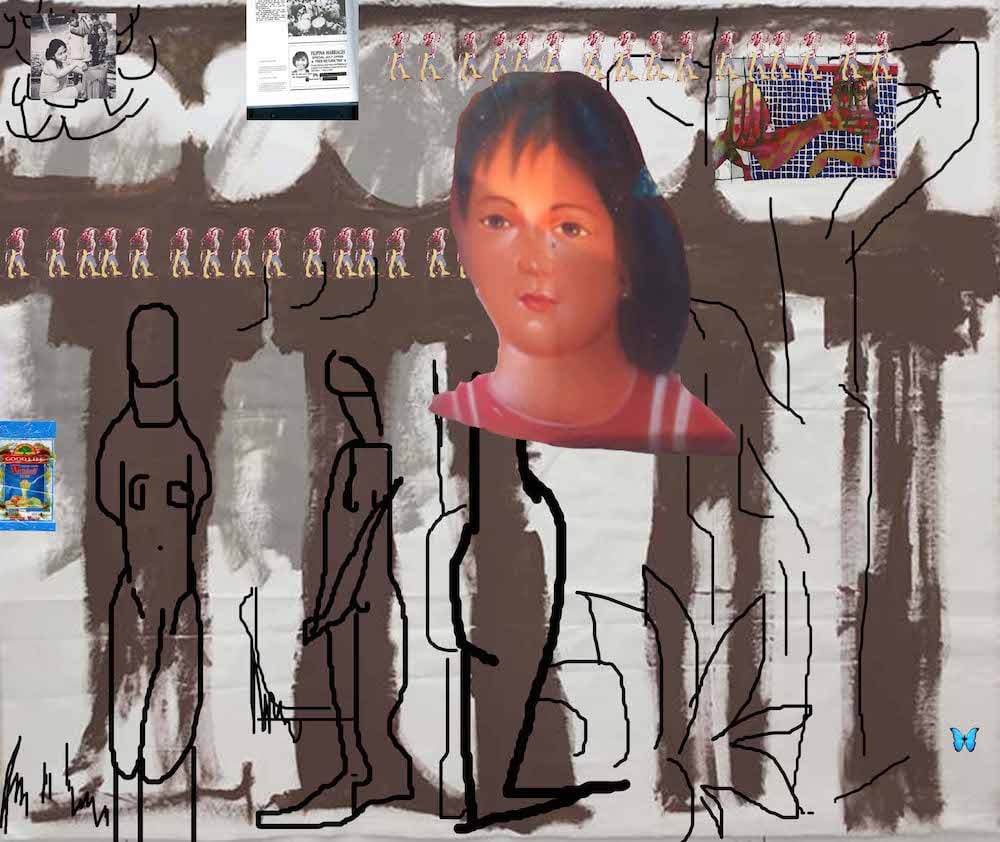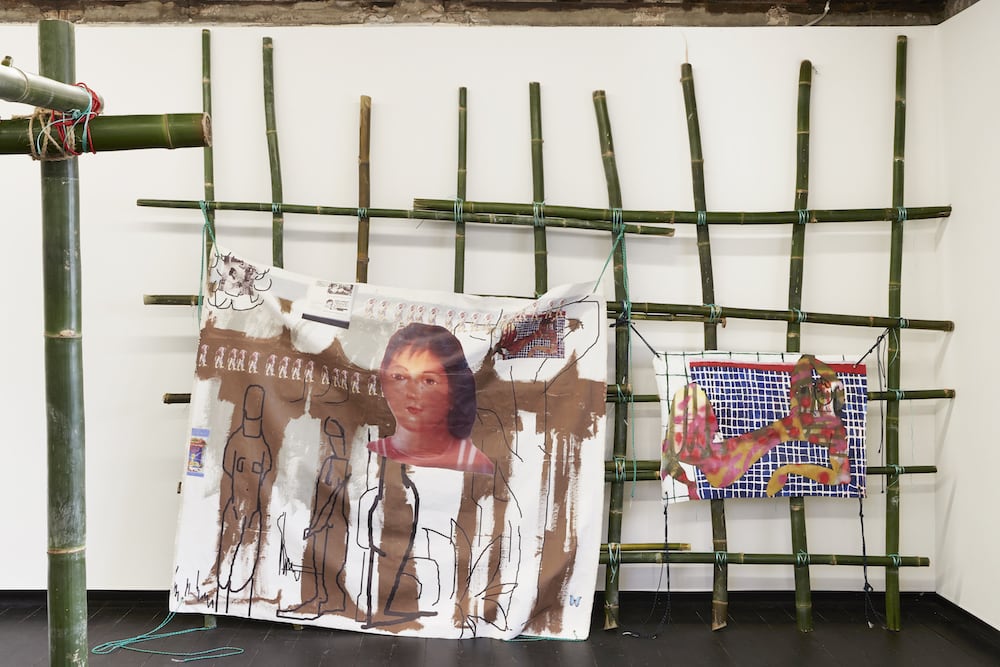

This must be the taste of Language — the tongue mapped by many colours, parsed by the vowels of memory, the roof of the mouth the dome of a world circumscribed by consonants, whose edges suggest the sour-sweetness of oranges, the bittermelon’s green rind, the river- scent of mangoes all the way to the grove.
— Marjorie M. Evasco, Skin of Water: Selected Poems (2009)
language – wika
colour – kulay
memory – ala-ala
mouth – bibig
Sharing a conversation in mother-tongue is an opportunity to manifest culture that sits deeply within. As a descendent of the Philippines born and raised in Australia, the interweaving of Tagalog and English reinforces my sense of trans-cultural fluidity. While Tagalog remains at arm’s length in my every day, exercising its words and phrases acts as a natural extension of self. Indeed, persistence of languages, despite dislocation from ancestral homelands, is testament to the resilience of culture and the integral role that language plays in cultural identity. In our increasingly globalised and commodified world, it also speaks to the urgency of understanding the significant needs of diaspora communities.
I wrote this essay on Kaurna land. As public interest builds around First Nations’ culture and language, there are still glaring omissions, misunderstandings and ignorance of their meaning for Indigenous peoples in mainstream discourse. I consider language and maternal language through the lens of Indigenous and colonial histories, and acknowledge the ongoing work of First Nations artists, academics and communities who still struggle to have their language, and its connection to country, recognised and respected. This essay seeks to find common ground between the mother-tongue languages of diaspora communities and my writing practice, linking language to place and to art criticism.
Aida Azin is a Filipino-Iranian artist living and working on Wurundjeri land. Her work addresses experiences of displacement, segregation, diaspora, linguistic identity and cultural acquisition through painting, installation, murals, live events and community work. Recently, through a series of collaborations with co-creator Lou Javellana and Negative Space — a collective based in Adelaide and Manila — Aida programmed a series of events titled S A L U H A N. This translates from the Tagalog as ‘to eat together’ or ‘join in eating’ and, when pronounced slightly differently, means ‘provide support from below’. These events involved artists from both Australia and the Philippines exhibiting artworks, sharing food, knowledge, language and ancestry, trading zines and providing a platform for activism. These events introduced a new and dynamic way of creating work and connection with communities that has spread throughout Aida’s practice. By creating a platform that engages with language through arts and culture, audiences and participants can embody the spirit of a place, rather than simply viewing it within the constraints of the white cube. These exchanges work to connect us not just linguistically but also culturally, a bridge across the transient oceans of language and of culture.
S A L U H A N is an important example of collectives and small ecologies of artistic communities who are working on the periphery of a number of practices. For Aida, as with other facilitators of the event, they comment on the fundamental value in process, experimentation and not setting objectives in their work. Value is essentially measured in the time spent together, in the formation and exchange of ideas to find common ground. Their ‘work’ or ‘output’ is for those who frequent their site, encouraging conversation across cultures and emphasising the need for alternative spaces and programming that caters for broader audiences.
A language does not belong to a place. A language is born of a place. It is learned; it transfers from location to location and holds no sense of ownership. It cannot be possessed as it reinvents itself every time it is embodied. When we speak a maternal language we are honouring it. We embody the language while sharing it in an exchange with another. This dialogue, exchange and translation of mother-tongue languages are a part of diaspora communities’ ongoing attempts to retain a cultural identity.
language – salita
home – bahay
community – pamayanan
art – sining
Aida’s work examines how individuals relate to the idea, and the daily realities, of diasporic identity. She speaks of her disconnection from mainstream conversation around diaspora and comments on her urge to interrogate the ways it is spoken about. Her work traces the history and meaning of diaspora as a word, concept and lived reality, and asks audiences to imagine alternatives by which to think of migrant and displaced groups.
In 2019, Aida Azin presented Brown Pillars at Firstdraft, a gallery in Warrang (Sydney). Each installation within the gallery space reflected on the history of diaspora as a concept, and its simultaneous utility and redundancy as a term describing a shared experience of living away from our homeland. Conflict, resistance, dejection and affirmation were made visible, urging us to rethink and redefine ideas of belonging and citizenship. Bamboo structures, much like the make-shift housing used across the Philippines coastline, were loosely strung with paintings which combine imagery of pop culture and material excess. Through the creation of an immersive and awakened space, Brown Pillars was more than an ‘artwork’; it was an invitation into Aida’s thinking. At different moments throughout the exhibition she encouraged her audience to be part of the work through movement, transcription and dialogue.
conflict – salungatan
home – sariling
bayang idea – idea
history – kasaysayan
Aida’s loosely suspended paintings emulated an unknown and material spirit. One painting, Brown Pillars (2019), includes a collage of imagery from crass clipart to spirited drawings of Gauguinesque female figures — exoticised and reimagined to cater for contemporary taste. Mocking painterly processes of European masters and inserting her own visual language through paste-ups of food ads or 1980s mail-order bride listings, Aida’s composition questions cultural representations of people of colour and strongly expresses the disposition and anxiety of a person misunderstood by both home and foreign land. This painting included a small photograph of the artist’s mother, proudly smiling while washing an ‘AUSTRALIA’ t-shirt under a pump hose — a familiar image of feminised Filipino domesticity. This image of youthfulness, hope and innocence speaks to a broader conversation, shared by many diaspora communities, around the formation of a geographical identity and how we value family both culturally and spiritually in transient spaces.
Another large canvas painting, Ano Nangyari? (2019), features Okir, a pre-colonial Filipino folk art motif, strewn among words and a range of abstract forms. Looking deeper into the painting, shadowy and skeletal figures emerge, their oceanic colours giving the work a sense of movement, of transience. The haphazard juxtaposition of motifs and figures acts as a window into Aida’s process of language reformation — a pervading sense of dislocation within the search for connectivity. Translations for English words like ‘we’, ‘me’ and ‘my’ are painted brashly onto the canvas to amplify this sense of confusion and displacement while recording Aida’s pursuit of connection to a traditional craft through her mother-tongue. The scale, materiality and imagery speak of great urgency. An urgency to educate, advocate, understand and, most of all, welcome. Her figures and caricatures are eerie and humorous, encapsulating a sense of ‘otherness’ and difference; my thoughts return to the difficult realities of displacement and segregation. These scenes are not fictional. While they appear cartoonish and hint at pop culture, Aida’s practice speaks to second- generation immigrants and our collective crisis.
ocean – dagat
language – pananalita
shadow – anino
word – salita
In conversation, Aida tells me that a number of speculations, theories and reflections arose from this exhibition and could not be distilled anywhere post presentation. She discovered through murals, community work, events and public programming that her practice is less concerned with the traditional formalities of painting and is instead an expression of complex diasporic and cultural identities. Through collaboration and kinship Aida has expanded her practice, welcoming outside voices to play a role in her art.
As a viewer or as a participant in Aida’s work, we bear witness to her process of unlearning — she pulls back the layers of socio-political conditioning that enforces a particular notion of identity. What remains, and what we can see in her art, is a true sense of optimism, empathy and curiosity about culture, history and identity. In Brown Pillars and S A L U H A N, Aida navigates the complex terrain of linguistic and cultural connection and disconnection. Her practice opens up linguistically fluid possibilities for art criticism.
This essay acts as a small window into Aida’s practice — seeing language, place and community through her work opens up opportunities for art criticism to connect with diasporic language in ways that colonial languages cannot. Her work calls for arts writing that places care and culture at its heart.
Maternal languages — beyond mainstream representation, with all their biological and geographic complexities — can begin a negotiation of selfhood. Aida’s work claims space for these words and phrases; our mother-tongue is materialised and is, once again, within reach.
My home is my language
My language is a shadow
The word is an ocean
Ang tahanan ko ay ang aking wika
Ang aking Wika ay isang anino
At ang salita ay karagatan
